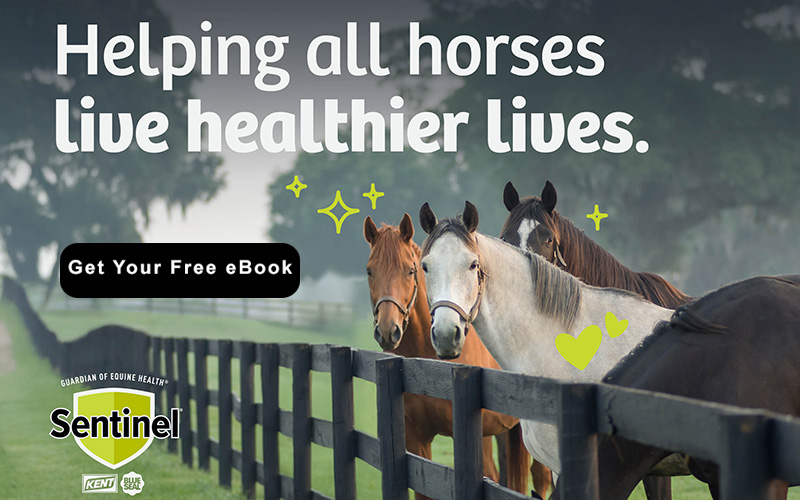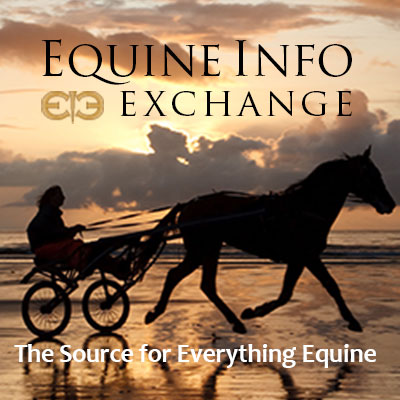Health & Education
We all want the best care possible for our horses. The Heath & Education section covers both Learning Institutions, Organizations as well as many sources for equine assistance including Veterinarians and Farriers.
For those who want a to formally study horses, the Education section includes College Riding, Equine Studies, and Veterinary Schools. Learn about the wide variety of horses in the Horse Breeds section. Supplements and Treatments Therapy are also included in the section.
Everyone can learn from Fine Art and there are some specialty Museums that might surprise you.
Horses as a therapy partner enrich the lives of the disabled. These facilities are listed in our Therapeutic Riding section. To help children and young adults build confidence and grow emotionally, please see the resources available on the Youth Outreach page.
Looking for a place to keep your horse? You can find it in the Horse Boarding section. Traveling? Find a Shipping company or Horse Sitting service if your horse is staying home!
Want to stay up to date with the latest training clinics or professional conferences? Take a look at our Calendar of Events for Health & Education for the dates and locations of upcoming events.
Do we need to add more? Please use the useful feedback link and let us know!
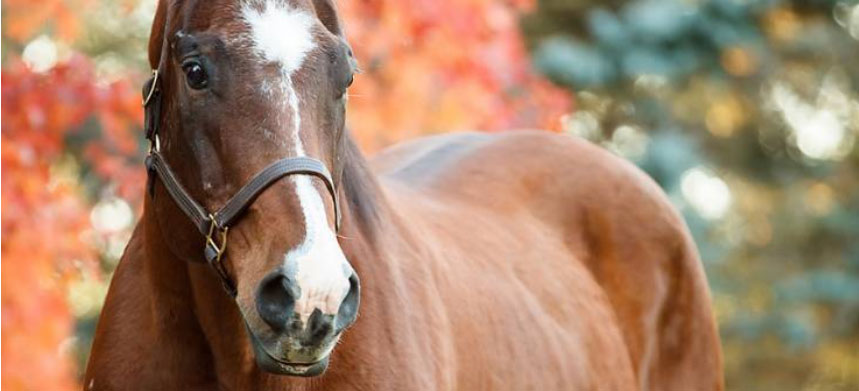
By Kentucky Equine Research Staff
As temperatures cool and competition season winds down for many, autumn is a good time to plan for potential changes to a horse’s routine. Nutrition, water consumption, body condition, and exercise are always important, but these factors are intertwined all year long, no matter the season. A horse’s needs are not static, thus a quick checkup can help ensure horses stay happy and healthy through autumn.
Plan seasonal activities. Is your horse continuing to compete locally, taking the winter off, or prepping for a long haul for warm-weather competition? If the workload is staying relatively constant, it is possible that few dietary changes are necessary. Lightening up training could mean lower calorie needs, depending on the horse.
On the other hand, if you are traveling to a winter circuit, training may intensify or even peak, and dietary needs may need to be adjusted accordingly. When traveling, bring along at least some hay from home to help ease the transition to whatever forage is available at your destination. Trailer travel can also affect a horse’s gastrointestinal tract, so it may be useful to add support from nutritional supplements specifically designed for gastric and hindgut health.
Watch temperatures and haircoat status. No matter the training schedule, low temperatures mean that a horse will need more energy to keep warm. A horse with a clipped coat needs some special attention in this regard. Blankets or rugs are essential for horses with clipped coats, but shorter coats mean a horse’s critical temperature (the temperature at which a horse needs more energy to stay warm) will be higher compared to a horse with a full coat. A horse with a full coat may remain comfortable at 32° F (0° C), whereas a clipped horse may need help staying warm below 59° F (15° C).
The best way to help a horse stay warm from a dietary standpoint is to increase the amount of forage in the diet through the provision of extra hay, soaked beet pulp, or hay cubes. Horses ferment fiber in the cecum, and a byproduct of fermentation is heat. The cecum is the “fermentation vat” that also serves as a horse’s internal heater, thus feeding forage is a good strategy for helping a horse stay warm in colder months.
Catherine Whitehouse, M.S., a nutritionist at Kentucky Equine Research, advises, “No matter your plans for the fall and winter season, it is of key importance to keep an eye on your horse’s weight to make sure no major gains or losses occur.” This is especially true for horses that are off for the winter or that wear blankets. It is necessary to remove blankets regularly to keep an eye on body condition and monitor proper blanket fit as well.
Assess water consumption. With increased forage intake comes an increased need for water, so be sure horses are drinking enough and that water sources are accessible and free of solid ice. One study reported that in cold weather ponies drank more water when it was either continually warmed or had warm water added to the source compared to water that was at the near-freezing mark.* Horses will drink cold water, but bucket heaters or the addition of warm water once or twice daily may help encourage more intake. Restore SR (Restore in Australia) is a balanced electrolyte supplement that supports proper hydration and can help encourage water intake.
Contemplate hoof care. Work with your farrier to determine if any shoeing changes should be made for colder weather. Some opt to remove shoes while others may add snowball pads to prevent the buildup of snow and ice. Bio-Bloom PS (Bio-Bloom HF in Australia and certain other locales) is designed to provide optimal nutrition support for hooves and coat, and autumn is a great time to consider adding it to the diet.
Schedule a veterinary exam. Autumn vaccinations, dental checkups, and general health evaluations will help prepare a horse for changing seasons and potentially catch problems before they start. Your veterinarian can advise of any health concerns that may need special care in cold weather. “A dental evaluation can help ensure a horse has the proper dentition to chew the forage needed for warmth as temperatures chill,” recommended Whitehouse.
Survey turnout areas. Turning out horses has numerous benefits, foremost of which are free-choice exercise and social interaction with peers. Despite these benefits, danger lurks in some fields. “As pasture grasses become dormant, horses may be more inclined to taste-test weeds they would ignore at the height of growing season,” said Whitehouse.
Because of this, it is important that weed control measures are well established, and it is just as crucial that horses are provided an alternative forage source when on pasture during autumn and winter. Further, any dead branches that have fallen from trees should be picked up immediately. The dried leaves of certain species, particularly some maple trees, are toxic to horses and definitively linked to an atypical muscle disorder.
In summary, a horse’s dietary needs are not constant and should be evaluated seasonally to ensure all calorie and nutrient needs are being met appropriately. For dietary help, reach out to a nutrition advisor at Kentucky Equine Research.
For years, Kathy sought healing from an emotionally destructive relationship. Through working with horses in a mental health therapy program she was finally able to uncover and confront the root cause of her suffering. Kathy’s interactions with horses served as a catalyst for her to find healing within herself. Watch the video below to see how horses helped Kathy uncover a 30-year secret.
As part of our mission to spread awareness of the healing power of horses, we seek to share stories of transformation that illustrate the healing journey and personal growth people can experience through the involvement of horses in mental health programs and services.
Read more: Uncovering Secrets | Seen Through Horses Campaign (2:56)
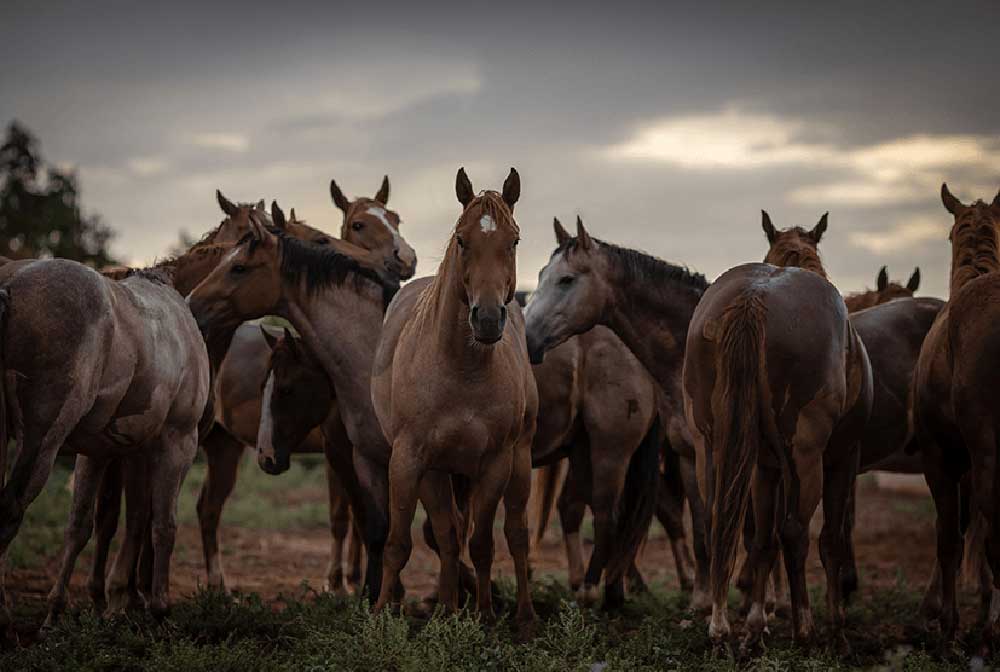
The American Quarter Horse is such a popular breed for several reasons.
Versatility: They are incredibly versatile horses, excelling in a wide range of disciplines. From ranch work to rodeo events like barrel racing and calf roping, to dressage and show jumping, Quarter Horses can do it all.
Speed: As their name suggests, they are incredibly fast over short distances. This makes them ideal for racing and other events that require quick acceleration and bursts of speed.
Gentle Temperament: Quarter Horses are known for their calm and docile nature, making them suitable for riders of all levels. They are often used as family horses and are great with children.
Athleticism: They are athletic and powerful horses, with a strong build and muscular physique. This allows them to perform at a high level in various disciplines.
History and Legacy: The Quarter Horse has a rich history and has played a significant role in the development of the American West. Their legacy as working horses and their association with cowboys and ranching has made them iconic.
Popularity: The American Quarter Horse Association is the largest equine breed registry in the world, with millions of registered horses.
This popularity has helped to solidify their place as one of the most sought-after horse breeds.
You can learn all about The History of the American Quarter Horse Breed courtesy of the AQHA. Interested in becoming a member? Learn more HERE.
You can find more interesting stories in our section on Health & Education.
Watch the story of the incredible impact that a small nonprofit organization is having on the community of Oakland, California. “We Ride Too” is committed to serving a wide range of young people in the Oakland area who face various challenges and traumas with limited access to resources. Through programs for youth to connect with nature and horses, each child has a place where they are told they "can," instead of "can't," breaking barriers and making a difference for their mental health and future.
As part of our mission to spread awareness of the healing power of horses, we seek to share stories of transformation that illustrate the healing journey and personal growth people can experience through the involvement of horses in mental health programs and services.
In this episode of StallSide, we sit down with Dr. Katie Garrett, the current president of the American Association of Equine Practitioners (AAEP). Dr. Garrett shares her insights on the evolving landscape of equine veterinary medicine, the role of AAEP in shaping the future of the profession, and the challenges and opportunities facing equine practitioners today. She also highlights the important work of The Foundation for the Horse, the charitable arm of the AAEP, which supports equine welfare through education, research, emergency relief, and equitarian initiatives that provide care to underserved horse populations. Tune in to hear about her leadership journey, key initiatives within AAEP, and how the organization and its foundation are advancing equine health and supporting veterinarians in delivering the highest standard of care for horses.
There once was a horse called Ace who used to bite and intimidate people. Watch as his owner seeks Monty Roberts' help to change this behavior and witness how quickly Ace learns to become a good citizen. See how his owner works with Certified Monty Roberts Instructor Maya Horsey to learn ways to establish clear consistent boundaries and improve the relationship with Ace. Go to: montyroberts.university.com.
Read more: Monty Roberts Equus Online University - Ace used to bite and intimidate people (2:20)
Putting a leather pad on a sore footed horse.
Read more: Painful Horse Hoof - Satisfying Therapeutic Horseshoeing
While successful in her corporate career, Adina was struggling with feeling burned out, losing her spark and increasingly unmotivated. Deciding to get help, she attends a personal growth workshop incorporating horses to address her burnout.
Watch how the horses play a pivotal role in her self-discovery and transformation. Through a series of experiences with horses, Adina learns to focus on the present and develops a new sense of joy, connection, and meaningful purpose.
As part of our mission to spread awareness of the healing power of horses, we seek to share stories of transformation that illustrate the healing journey and personal growth people can experience through the involvement of horses in mental health programs and services.
Help us raise awareness of the power of horses by sharing this video and supporting the Seen Through Horses Campaign.
Read more: "Finding Her Voice" Story of Transformation | Seen Through Horses Campaign (3:02)
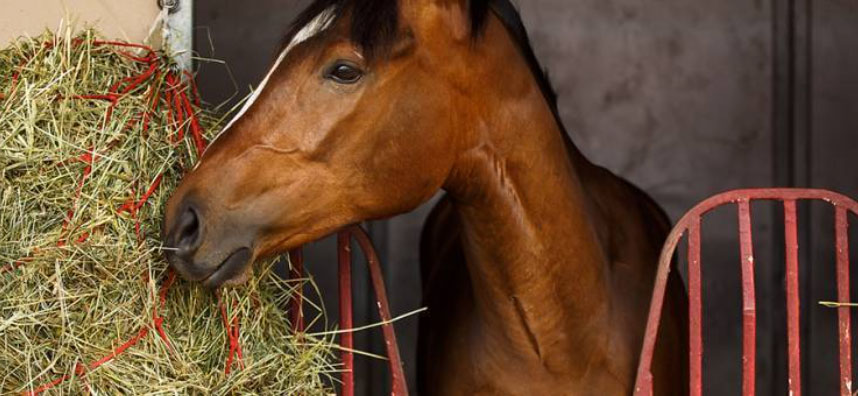
By Kentucky Equine Research Staff
The digestive system of horses and ponies is designed to process forage for the majority of each day. With modern management practices, however, horses are often maintained in stalls and fed meals twice daily, which can be consumed in a few hours or less. Horses left without forage for more than four or five hours may develop gastrointestinal or behavioral problems.
One option for decreasing the amount of time a horse spends without forage is the use of slow feeders. A recent study showed that consumption time was up to 61% higher when ponies were given access to partially filled haynets than when fed hay on the ground.
Another study exploring the benefits of slow feeders tracked chewing patterns with various slow-feeding devices.* Those researchers hypothesized that haynets with smaller holes would increase chewing frequency compared with feeding on the ground. Chewing stimulates the production of saliva, which contains bicarbonate, a compound that buffers the acidity in the stomach. More chewing produces more bicarbonate.
“Horses continuously produce gastric acid but only produce saliva while they are chewing. Therefore, continuous chewing can help reduce the risk of gastric ulcers by producing bicarbonate in the saliva,” explained Ashley Fowler, Ph.D., a nutritionist for Kentucky Equine Research.
To test the hypothesis that haynets increase chewing and alter chewing dynamics, the researchers fitted eight horses with “chewing halters.” These devices recorded individual chews using a pressure sensor on the noseband. Horses were maintained in stalls and fed bermudagrass at 1.5% body weight twice daily at 8 a.m. and 4 p.m. The researchers calculated the number of chews per kilogram of hay, chewing duration (total time spent chewing per day), and the percent of chews completed in the first 120 and 240 minutes of feeding. Horses were fed using haynets with large holes, haynets with small holes, haynets with only a bottom hole, and unrestricted off the stall floor.
Contrary to the researchers’ hypothesis, the haynets did not increase chewing frequency. Horses fed from the small hole haynet, however, had a longer chewing duration than horses fed off the stall floor. Further, fewer chews were completed in the first 240 minutes of being fed for horses feeding from small hole haynets compared to haynets with a single bottom hole.
“This research shows that slow feeders do not increase the number of chews for a specific amount of hay, but the small hole haynet did lengthen the amount of time that the horse spent chewing. This study also found that the horses had an increased rate of consumption from the haynets with a single bottom hole, which means not all slow feeders are created equal and need to be carefully evaluated,” advised Fowler.
In addition to access to forage, another way of protecting the sensitive squamous region of the stomach from acid damage is by offering a product containing antacids and stomach-coating agents.
Fowler added, “The squamous, or upper, portion of the stomach has fewer protective mechanisms against acid compared to the glandular, or lower, portion of the stomach and is more susceptible to developing ulcers from acid splash. Along with stimulating alkaline saliva production, consuming forage also helps create a fiber mat in the stomach, providing a physical ‘splash-guard’ to stop the acid from spraying on the squamous mucosa.”
- Which Off-Track Thoroughbreds Are Most Desirable?
- Marguerite Henry and the Movies - book excerpt "Dear Readers and Riders: The Beloved Books, Faithful Fans, and Hidden Private Life of Marguerite Henry"
- Danger Zones with Julie Goodnight and Christy Landwehr
- 32 and You: An Owner's Guide to Genetic Tests in Horses (55:02) - Cornell Equine Seminar
- Poor Horse Behavior? It Could Be Pain Related
- The Power of Horses | Supporting Mental Health in Rural Communities (7:58)
- Tackling Thrush in Horses
- Addressing the Shortage of Equine Veterinarians: Nationwide Practices Join Together
- Rood & Riddle Stallside Podcast - Breaking Ground in Laminitis Research with Dr Andrew van Eps (38:13)
- Horse Miscarriages Offer Clues to Causes of Early Human Pregnancy Loss - Cornell Veterinary Medicine
- A 6-Step Guide to Keeping Your Horse Healthy
- Performing Treadmill Endoscopy at Rood & Riddle Equine Hospital (1:59)
- Rood & Riddle Stallside Podcast - Tall Fescue Woes: Insights on Endophyte Ingestion
- Rood & Riddle Stallside - Understanding Equine Biomechanics and Farriery with Dr Jenny Hagen
- Regenerative Medicine Therapies in Horses
- Educational Benefits of Equine-Assisted Learning Programs for Students
- Why is the Mule the Most Important Member of the Horse Family? Cornell Equine Seminar
- Five Tips for Keeping Your Horse Sound - Cornell Vet Equine Seminar Series
- Deworming the horse using a paste syringe with Teresa Kackert
- Stable Vices: Theirs or Ours? Abnormal Behavior in Horses






